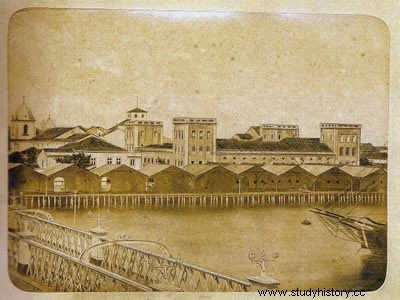
By Tales Pinto
The Praieira Insurrection , which began in Pernambuco in 1848, is generally treated as the revolt that ended the cycles of internal Brazilian conflicts that began with the country's independence in 1822. It also took place in the same year that revolutions broke out on European soil, in the event known as the People's Spring.
When analyzing the content of the Pernambuco rebels' claims in the “Manifesto ao Mundo”, it is possible to find similarities with some proposals defended on both continents. In the text written by Borges da Fonseca, the “10 commandments” of the revolt were defended:1st - Free and universal vote; 2nd- Freedom of the press; 3rd- Guarantee of work for all citizens; 4th- Only Brazilians could do retail trade; 5th- Harmony and independence between political powers; 6 - Extinction of the Moderating Power; 7th- Federalism; 8th- Guarantee for individual rights; 9 - Extinction of interest charges; 10th- Extinction of military recruitment.
According to the intentions of the Manifesto to the World, it is possible to perceive the clear liberal character of the Pernambuco insurrectionary movement, mainly through the division of powers, the end of the Moderating Power and the guarantee of the “free and universal” vote. There was also the influence of political currents called by Marxists as utopian socialists, especially those animated by Robert Owen, Charles Fourier and Proudhon.
The origin of the insurrection was linked to economic and political disputes between Pernambuco's elites, especially between former planters and those who had become rich more recently. Access to the purchase of slaves, at a time when England was fighting the slave trade, made it necessary to control the State apparatus in the main province of Northeast Brazil at that time.
The landowners who had just enriched themselves joined other urban sectors (law graduates, small businessmen, etc.) in Olinda and Recife, around the newspaper Diário Novo , whose headquarters were located on Rua da Praia, which is why the revolt took the name of Praieira. From this newspaper, the future rebels began to publicize their political opposition to the provincial governments commanded by the two largest landowning families in Pernambuco:the Rego Barros and the Cavalcanti.
However, the opposition achieved provincial power in 1845, with the appointment to the presidency of the province of Antônio Pinto Chichorro da Gama. Controlling the bureaucratic machine, the rebels began to fire employees linked to the traditional sugarcane elites, mainly delegates and sub-delegates. But the fall of the Liberal government in 1847 brought the rebels back into opposition. The attempt to disarm them gave rise to the insurrection.
Conflicts already existed against the high prices of food products, mainly, leading the urban population to attack the commercial establishments controlled by Portuguese, identified as responsible for the situation. The Portuguese controlled trade in the province, which explains why the Manifesto nationalized retail trade.
The armed clashes began in November 1848 and lasted until December 1850, with the main leaders of the insurgents Pedro Ivo, João Ribeiro Roma, Nunes Machado and Antônio Borges da Fonseca. The troops commanded by them managed to encircle Recife for a while, in February 1849, but they were no match for the loyalist forces, especially after the support of the central government with arms and troops. Fighting in the interior took place until December 1850. Several leaders were arrested and others fled abroad. João Roma and Nunes Machado died in combat. Those who had been arrested were granted amnesty in 1851.
But the Praieira Insurrection was not just a struggle of the urban elite and middle classes. There were craft workers and other free men who intended to improve their living and working conditions with the end of the commercial control exercised by the Portuguese. However, as is often the case when different classes come together for a social struggle, members of the lower classes of the social hierarchy were also defeated.
